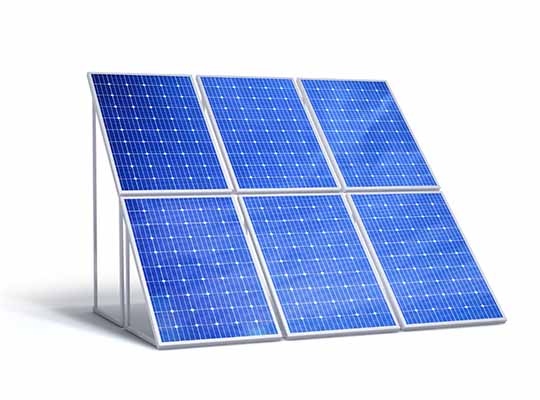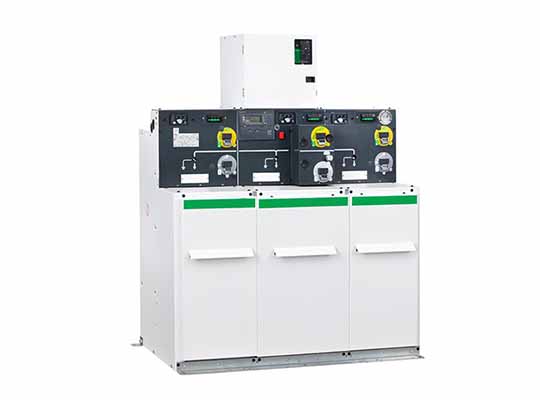According to a new report published by Allied Market Research, the solar panel market size was valued at $152.3 billion in 2022, and is estimated to reach $330.4 billion by 2032, growing at a CAGR of 8.1% from 2023 to 2032.
Solar panels, also known as photovoltaic (PV) panel or solar modules, are devices that convert sunlight into electrical energy through a process called the photovoltaic effect. Solar panels are a key component of solar energy systems and play a crucial role in generating electricity from sunlight.
The residential zone has embraced solar panels as an advantageous capability of decreasing electricity bills and promotion self-sufficiency. Homeowners can deploy rooftop solar panels, which convert daylight into electricity for instantaneous consumption or storage in batteries.
Excess power generated all through the day can be fed again into the grid, earning credit or compensation from utility businesses via net metering programs. Furthermore, solar-powered water heaters have received popularity, harnessing the sun’s energy to supply warm water for home use.
The solar panel market share covers profiles of key enterprise participants such as Trina Solar Limited, Canadian Solar Inc., Jinko Solar Holding Co. Ltd., JA Solar Technology Co., Ltd, Yingli Solar, SunPower Corporation, RenewSys India Pvt, Panasonic Corporation, REC Solar Holdings AS, and LG Electronics.
On the foundation of type, the market is classified into crystalline silicon, skinny film, and others. On the basis of grid type, the market is divided into on-grid, and off-grid. On the basis of technology, the market is bifurcated into photovoltaic systems and targeted solar electricity systems.
By application, the market is categorized into residential, commercial, and industrial. On the foundation of the end-use industry, the market is fragmented into electrical energy generation, lighting, heating, and charging.
Key aspects of solar panels:
Photovoltaic Effect: Solar panels are made up of multiple solar cells that contain semiconductor materials, typically silicon. When sunlight strikes these solar cells, it excites electrons within the semiconductor, creating an electric current. This direct conversion of sunlight into electricity is known as the photovoltaic effect.
Solar Cell Types: There are several types of solar cells, including monocrystalline, polycrystalline, and thin-film. Each type has its own characteristics and efficiency levels.
Monocrystalline Solar Cells: Made from single-crystal silicon, monocrystalline panels are known for their high efficiency and sleek appearance.
Polycrystalline Solar Cells: Polycrystalline panels are made from multiple silicon fragments, resulting in lower efficiency but typically lower cost.
Thin-Film Solar Cells: Thin-film panels use various semiconductor materials and are less efficient than crystalline panels but can be more flexible and lightweight.
Efficiency: Solar panel efficiency refers to how effectively a solar panel converts sunlight into electricity. Efficiency varies by panel type and manufacturer but generally ranges from 15% to 22%.
Capacity (Wattage): Solar panels are rated in watts (W) or kilowatts (kW) to indicate their power output. The capacity of a solar panel depends on its size and efficiency.
Environmental Benefits: Solar panels are a clean and renewable energy source that produces electricity without emitting greenhouse gases or air pollutants, contributing to a reduction in carbon emissions and mitigating climate change.
Inverter: The electricity generated by solar panels is direct current (DC). Inverters are used to convert DC electricity into alternating current (AC), which is suitable for powering homes and businesses.
The technological advancements in solar panel are anticipated to provide sufficient development potentialities for the expansion of the world solar panel market growth in the future years. Solar panel technological know-how has seen substantial developments in latest years, enhancing efficiency, durability, and versatility.
Thin-film solar panels make use of a a lot thinner layer of photovoltaic material compared to usual silicon panels. This science gives advantages such as flexibility, light-weight design, and the potential to be built-in into more than a few surfaces.
Historical Trends of Solar Panel Industry:
In 1839, French physicist Alexandre-Edmond Becquerel discovers the photovoltaic effect, which is the process of changing daylight into electricity. This discovery laid the basis for the development of photo voltaic panels.
In 2013 Solar panel effectivity continues to improve, with the improvement of more efficient substances and technologies. Companies like SunPower and Panasonic obtain telephone efficiencies exceeding 20%.
In 2014, the International Space Station (ISS) is outfitted with a state-of-the-art photo voltaic energy system that offers electricity to the station and prices its batteries. The major photovoltaic panels used on the ISS are called the “Photovoltaic Solar Arrays.” They have been deployed in a sequence of missions over countless years.
In 2020s Solar power continues to grow globally as one of the most promising renewable electricity sources. Researchers center of attention on enhancing efficiency, energy storage solutions, and integrating solar electricity into clever grids.
Source: https://www.alliedmarketresearch.com/solar-panel-market













